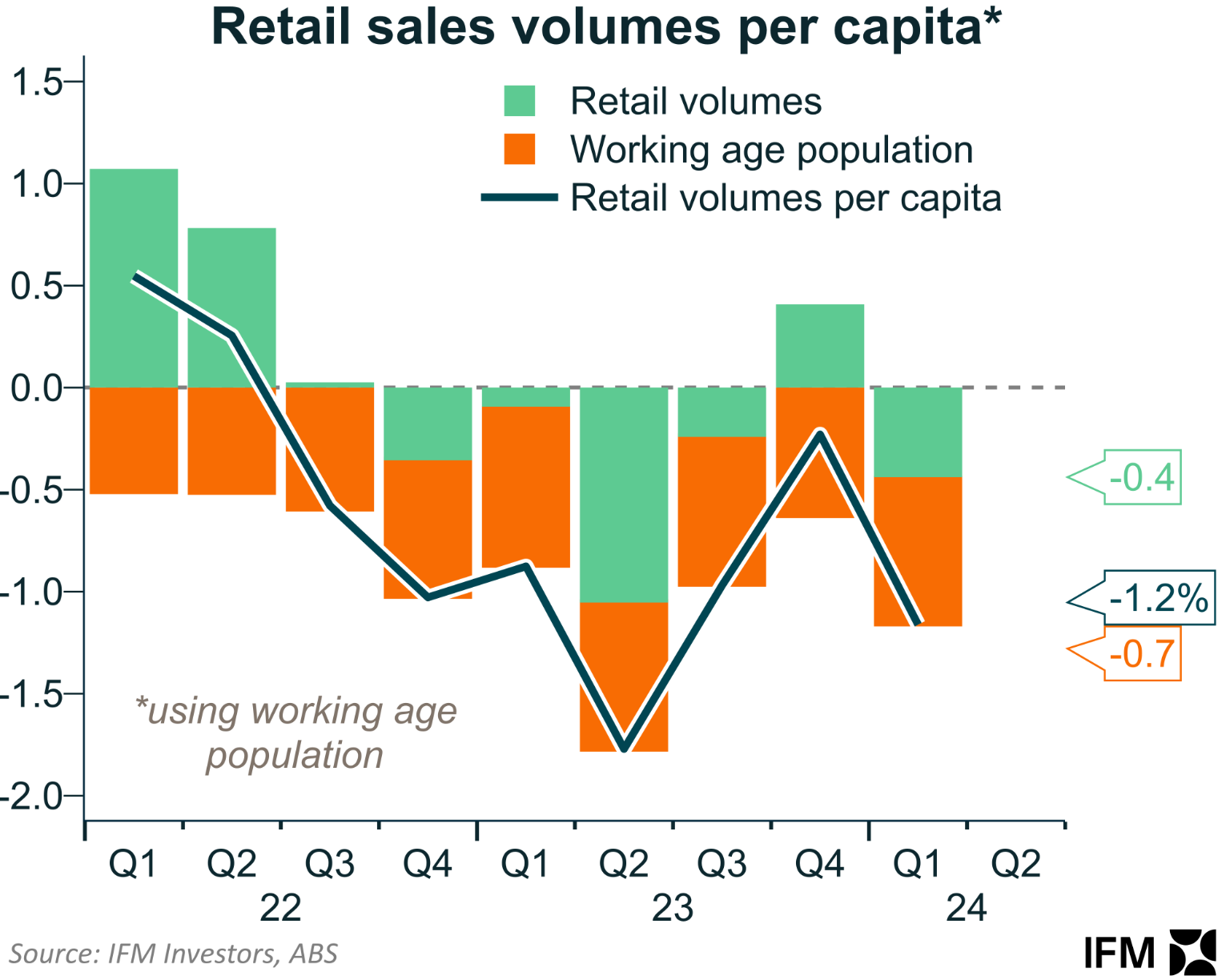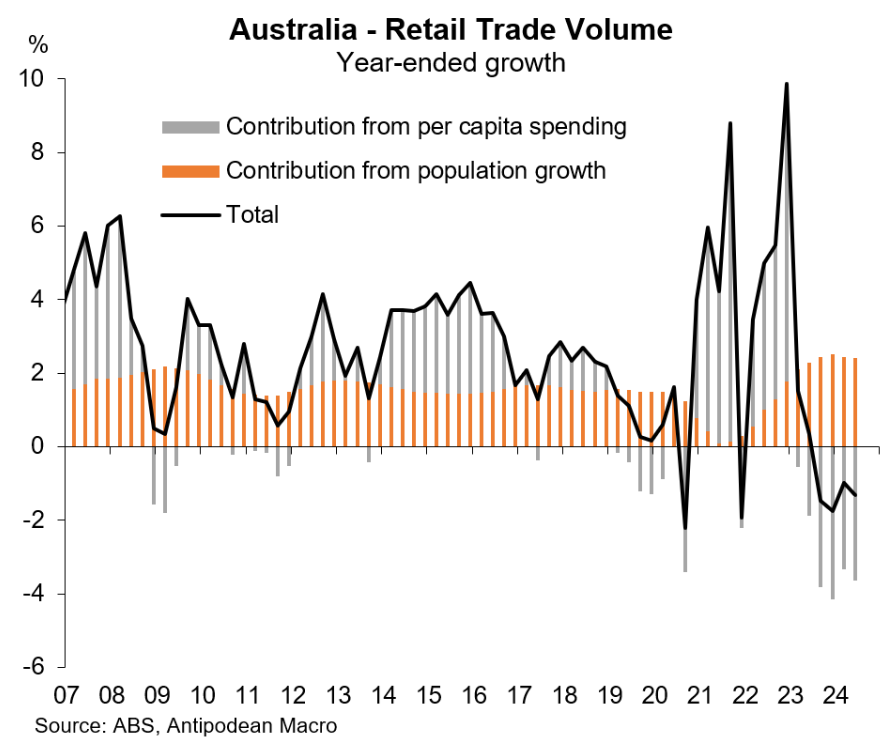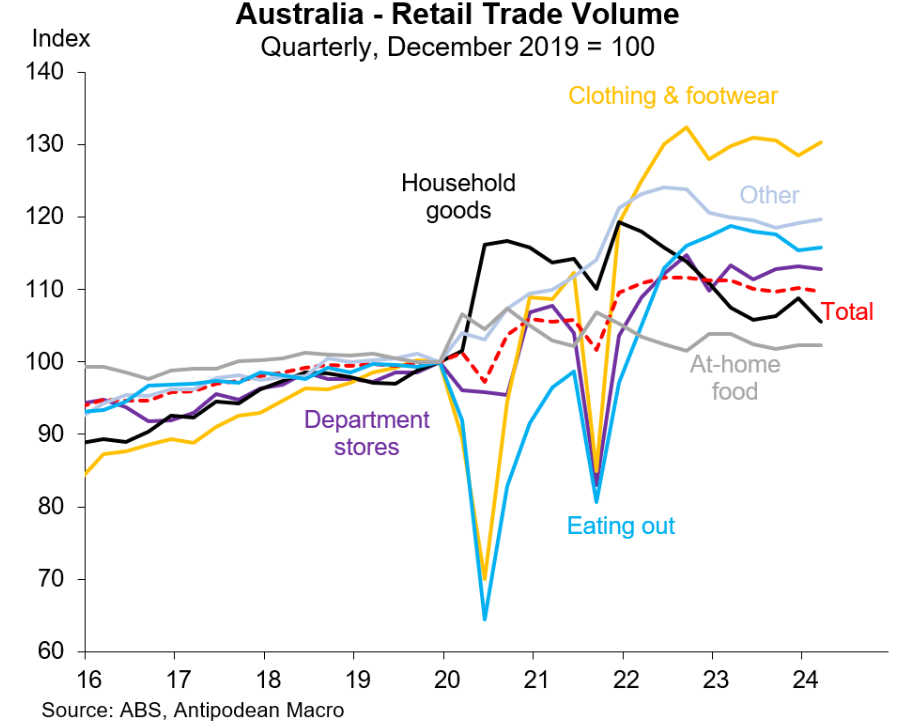The Reserve Bank of Australia (RBA) kept the official cash rate on hold on Tuesday primarily because the household sector, which is the main driver of the Australian economy, is under deep pressure.
“Household consumption growth has been particularly weak as high inflation and the earlier rises in interest rates have affected real disposable income”, the RBA’s statement read.
“In response, households have been curbing discretionary spending and maintaining their saving”.
Real per capita household disposable incomes in Australia suffered the world’s sharpest decline in 2023, falling by 6%:

According to the most recent retail sales figures from the Australian Bureau of Statistics (ABS), households have sharply reduced their discretionary spending as a result of this sharp decline in disposable income.
The below charts from Justin Fabo at Antipodean Macro tell the story.
The overall volume of retail trade fell by 0.4% in the March quarter:

The decline in per capita retail trade volumes is downright nasty, collapsing by 5.7% since Q2 2022:

The next chart from Alex Joiner at IFM Investors shows that per capita retail sales volumes have fallen for seven consecutive quarters:

The impact of population growth on aggregate retail trade volumes is illustrated clearly below:

Finally, the decline in retail sales volumes has been driven by durable items, such as household goods:

It is hard to see how the Reserve Bank will be in a rush to hike rates when the household sector is so weak, experiencing both falling incomes and spending.

